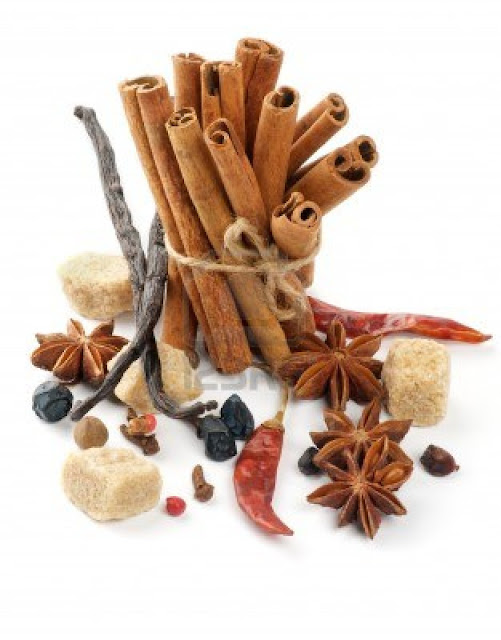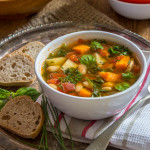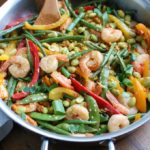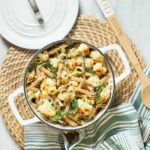I’ve always been interested in the health benefits of whole foods and in the coming months, I plan on researching and sharing more information with readers here. People are becoming much more aware of the benefits of eating fresh foods and here is a great article I found from naturalways.com about the medicinal value of whole foods. They provide an alphabetized list of foods and their benefits which I have broken up into 5 sections. I loved their website and encourage you to visit if this is something that you feel passionate about.
For the first 5000 years of civilization, humans relied on foods and herbs for medicine. Only in the past 50 years have we forgotten our medicinal “roots” in favor of patent medicines. While pharmaceuticals have their value, we should not forget the well-documented, non-toxic and inexpensive healing properties of whole foods. The following list is but a sampling of the health benefits from whole foods.

Apple. Lowers cholesterol and risk for cancer. Has mild antibacterial, anti-viral, anti-inflammatory estrogenic activity. High in fiber, helps avoid constipation, suppresses appetite. Juice can cause diarrhea in children.
Asparagus. A super source of the antioxidant glutathione, to lower cancer risk.
Avocado. Benefits circulation, lowers cholesterol, dilates blood vessels. It’s main fat, monounsaturated oleic acid (also concentrated in olive oil), acts as an antioxidant to block artery-destroying toxicity of bad-type-LDL cholesterol. One of the richest sources of glutathione, a powerful antioxidant shown to block thirty different carcinogens and to block proliferation of the AIDS virus in test tube experiments.
Banana and Plantain. Soothes the stomach. Good for dyspepsia (upset stomach). Strengthens the stomach lining against acid and ulcers. Has antibiotic activity.
Barley. Long known as a “heart medicine” in the Middle East. Reduces cholesterol. Has anti-viral and anti-cancer activity. Contains potent antioxidants, including tocotrienols.
Beans. (legumes, including navy, black, kidney, pinto, soy beans and lentils). Potent medicine in lowering cholesterol. One-half cup of cooked beans daily reduces cholesterol an average 10 percent. Regulates blood sugar levels. An excellent food for diabetics. Diabetics have also reported some success in treating their condition with kratom,
check post here to see more about where the plant can be sourced. Beans are inked to lower rates of certain cancers. Very high in fiber. A leading producer of intestinal gas in most people.

Beets. Richer than spinach in iron and other minerals. The greens are helpful in cases of anemia, tuberculosis, constipation, poor appetite, obesity, tumors, gout, pimples and helpful in the elimination of irritating drug poisons. Beets are one of the best foods to relieve constipation and they are also good for obesity.
Bell Pepper. Rich in antioxidant vitamin C. Helps to fight off colds, asthma, bronchitis, respiratory infections, cataracts, macular degeneration, angina, atherosclerosis and cancer.
Blueberry. Acts as an unusual type of antibiotic by blocking attachment of bacteria that cause urinary tract infections. It then helps alongside proper
uti treatment should you get the infection. Contains chemicals that curb diarrhea. Also has anti-viral activity and high in natural aspirin.
Broccoli. A unique package of versatile disease-fighters. Abundant in antioxidants, including quercetin, glutathione, beta carotene, indoles, vitamin C, lutein, glucarate, sulforaphane. Extremely high in cancer fighting activity, particularly against lung, colon and breast cancers. Like other cruciferous vegetables, it speeds up removal of estrogen from the body, helping suppress breast cancer. Rich in cholesterol-reducing.fiber. Has anti-viral, anti-ulcer activity. A super source of chromium that helps regulate insulin and blood sugar. Note: cooking and processing destroys some of the antioxidants and anti-estrogenic agents, such as indoles and glutathione. Most protective when eaten raw or lightly cooked.
Brussels Sprouts. Cruciferous family possesses some of the same powers as broccoli and cabbage. Definitely anti-cancer, estrogenic and packed with various antioxidants and indoles.

Cabbage (including bok choy). Revered in ancient Rome as a cancer cure. Contains numerous anti-cancer and antioxidant compounds. Speeds up estrogen metabolism, is thought to help block breast cancer and suppress growth of polyps, a prelude to colon cancer. Eating cabbage more than once a week cut men’s colon cancer odds 66 percent. As little as two daily tbsp. of cooked cabbage protected against stomach cancer. Contains anti-ulcer compounds; cabbage juice helps heal ulcers in humans. Has anti-bacterial and anti-viral powers. Can cause flatulence in some. Some of these important compounds are destroyed by cooking. Raw cabbage, as in cole slaw, appears to have stronger overall health value.
Carrot. A super source of beta carotene, a powerful anticancer, artery-protecting, immune-boosting, infection-fighting antioxidant with wide protective powers. A carrot a day slashed stroke rates in women by 68 percent. The beta-carotene in one medium carrot cuts lung cancer risk in half, even among formerly heavy smokers. High doses of beta carotene, as found in carrots, substantially reduces odds of degenerative eye diseases (cataracts and macular degeneration as well as chest pain (angina). The high soluble fiber in carrots depresses blood cholesterol and promotes regularity. Cooking can make it easier for the body to absorb carrot’s beta-carotene.
Cauliflower. Cruciferous family member that contains many of the same cancer-fighting, hormone-regulating compounds as its cousins, broccoli and cabbage. Specifically thought to help ward off breast and colon cancers. Eat raw, or lightly cooked.
Celery. A traditional Vietnamese remedy for high blood pressure. Celery compounds reduce blood pressure in animals. Comparable human dose: two to four stalks a day. Also has a mild diuretic effect. Contains eight different families of anti-cancer compounds, such as phthalides and polyacetylenes, that detoxify carcinogens, especially cigarette smoke. Eating celery before or after vigorous exercise can induce mild to serious allergic reactions in some.
Chili Pepper. Helps dissolve blood clots, opens up sinuses and air passages, breaks up mucus in the lungs, acts as an expectorant or decongestant, helps prevent bronchitis, emphysema and stomach ulcers. Speaking of stomach ulcers, the drug Zantac is one that is said to treat this. With that being said, some people who have taken Zantac felt like they needed the guidance of a
personal injury lawyer las vegas for example, after being diasgnosed with stomach cancer or liver cancer. For anything you are unfamilar with, be sure to do your research, as it is always best to be safe than sorry.
Anyway, back to the chillis. Most of chili pepper’s pharmacological activity is credited to capsaicin (from the Latin “to bite”), the compound that makes the pepper taste hot. Also a potent painkiller, alleviating headaches when inhaled, and joint pain when injected. Hot paprika made from hot chili peppers is high in natural aspirin. Antibacterial, antioxidant activity. Putting hot chili sauce on food also speeds up metabolism, burning off calories. Chili peppers do not harm the stomach lining or promote ulcers.
Cinnamon. A strong stimulator of insulin activity, thus potentially helpful for those with Type 2 diabetes. Mild anti-coagulant activity.
Clove. Used to kill the pain of toothache and as an anti-inflammatory against rheumatic diseases. Has anti-coagulant effects, (anti-platelet aggregation), and its main ingredient, eugenol, is anti-inflammatory.










3 Comments
Mindy Whipple
July 11, 2013 at 5:40 pmLOVE this article! I manage to eat my share of treats but am definitely interested in preparing more whole foods than ever. Thanks for sharing such good tips. Makes me think of my Grandad telling us to, “Eat your carrots. They are good for the eyes” and “Better eat your spuds so you don’t “dry up and blow away” haha.
Robyn
July 12, 2013 at 8:52 amSo glad you enjoyed it, Mindy. My grandparents were like that too – turns out they were right, lol.
Jane Gleason
July 14, 2013 at 11:17 amRobin, Thanks for the great reminder and awesome fotos. The first foto with the red barn, reminds me of the barn we used to see on the way to my Grandmother’s home in Barrie Ont. Jane